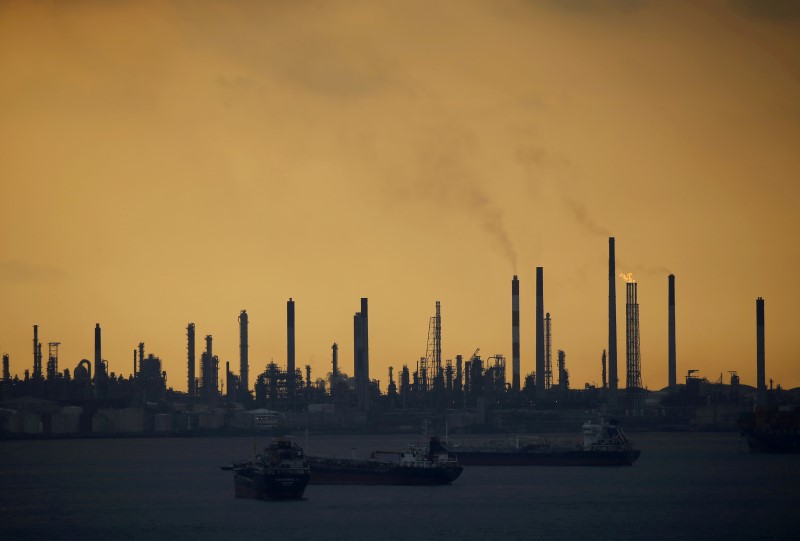By Ahmad Ghaddar
LONDON (Reuters) - Oil prices fell on Thursday as traders took profits after three sessions of gains, though prices remained close to their highest this year thanks to a fall in U.S. crude inventories and supply disruptions.
International Brent crude oil futures (LCOc1) traded 46 cents a barrel lower at $52.05 (£35.9) a barrel at 1132 GMT (1232 BST), after setting a 2016 high of $52.86 a barrel earlier in the session. U.S. crude (CLc1) fell by 34 cents a barrel to $50.89 after also hitting a new 2016 high at $51.67.
A rebounding U.S. dollar also weighed on prices.
"If you look at the week behind us ... there was support for commodities from the currency side, the equity side, and the emerging markets side," chief commodity analyst at SEB Bjarne Schieldrop said.
"We see some reverse of that now," he added.
A fall in the dollar against a basket of currencies (DXY) to a five-week low on Wednesday boosted oil prices, but the index recovered on Thursday, rising by 0.33 percent at 1135 GMT.
A weaker dollar makes oil cheaper for holders of other currencies.
Oil prices also gained ground after data on Wednesday from the U.S. Energy Information Administration (EIA) showed U.S. crude stocks last week fell by 3.23 million barrels, while inventories of gasoline and middle distillates rose. [EIA/S]
Supply outages in Nigeria and Canada have also kept oil prices supported.
Consultancy Energy Aspects estimates Canadian output losses will total 29 million barrels across May and June, "after adjusting for turnaround work that was underway before the wildfires broke out, and assuming a pre wildfire utilisation rate of 85 percent of (the 2015 average)".
The Niger Delta Avengers militant group on Wednesday rejected an offer of talks with the government to end its attacks on oil facilities and said it had blown up a Chevron (N:CVX) pipeline site in the Niger Delta.
But some analysts said there are signs that downward pressure on prices is mounting.
ANZ bank said the rises were "tempered by an increase in (U.S.) crude production of 10,000 barrels per day to 8.75 million barrels per day and the number of active rigs increasing by 9 to 325".
Traders also said refined product stocks were building up in the United States and Asia.

With fundamentals both for and against higher prices, many traders and analysts say a price of $50-60 per barrel may be fair value. This is reflected in Brent's forward curve, which stays within that range until early 2021.